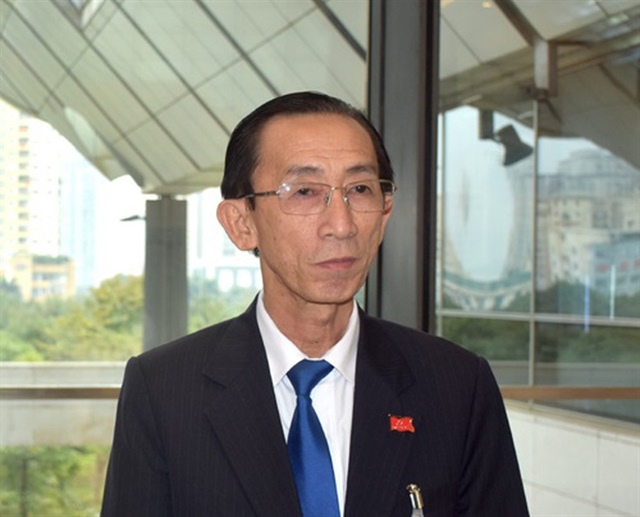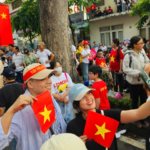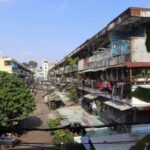Ho Chi Minh City’s Economy Leads the Way in the New Era
Challenges and Decline
Ho Chi Minh City has established its position in the country’s socio-economic landscape through its development journey. The city has maintained a high and stable economic growth rate, gradually forming growth poles. These positive outcomes reflect the efforts and determination of the city’s government and its people.
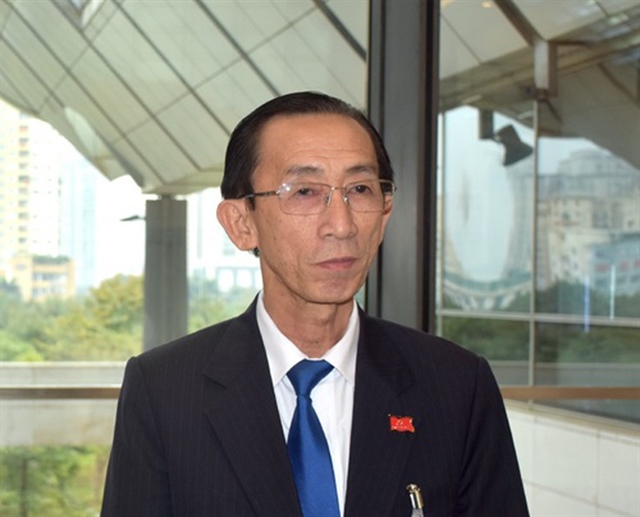
According to Prof. Dr. Tran Hoang Ngan, the city’s potential and advantages have not been effectively utilized. Increasing competition from other localities in attracting investment has diminished the city’s preeminence and its role as a driving force for the region and the country. Infrastructure bottlenecks, traffic congestion, tidal flooding, and emerging challenges remain significant obstacles to sustainable development. |
These challenges became more pronounced as the city held its 11th Party Congress. Ho Chi Minh City had to focus on addressing these bottlenecks while also facing an unprecedented challenge—the COVID-19 pandemic.
In the years 2020–2021, the city was the most severely affected locality, with 62% of its economic activities dependent on trade and services. In 2021, the city’s economy fell into a recession, with a negative growth rate of 4.1%—the biggest shock in nearly 40 years of renewal. However, thanks to the close leadership and direction of the Central Government, the support of other localities, and the determination of the political system, medical teams, businesses, and people, Ho Chi Minh City overcame this unprecedented difficult period.
In 2022, the city gradually recovered and regained its growth momentum, but in early 2023, it faced new challenges due to the global economic context and domestic bottlenecks. Serious economic cases and the discipline of some leading officials had a significant impact on the psychology and decisions of the management team. Nevertheless, with resilience and determination, Ho Chi Minh City overcame this “headwind,” achieving growth rates of 5.81% in 2023 and 7.2% in 2024.
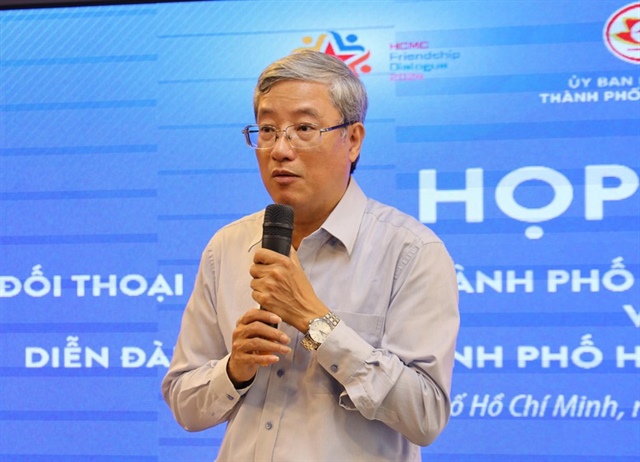 Mr. Pham Binh An, Vice Director of the Ho Chi Minh City Institute for Development Research, acknowledged that the city’s position and central role compared to the country have not been commensurate and tend to decline. The proportion of Ho Chi Minh City’s economy compared to the country is gradually decreasing, and while there are many enterprises, most are small and medium-sized (97%) with low competitiveness. The export proportion has also decreased rapidly, accounting for only 12% of the country’s exports in 2023, while industry accounts for only 19% of GRDP (lower than the national average of 32%). |
More worryingly, in recent years, the city’s economy has grown mainly in breadth, depleting growth drivers. Industrial infrastructure is limited and cannot meet development needs; the area of industrial parks in Ho Chi Minh City is 5,921 hectares, accounting for only 2.81% of the country’s total, with land prices becoming increasingly expensive.
Therefore, Ho Chi Minh City needs to restructure its economy or promote industrial transformation with a dual transformation content and value chain upgrade, developing core industries to seek new growth drivers.
Mr. Pham Binh An assessed that economic restructuring and growth are considered one of the city’s top solutions during the period of global economic integration. This shift is in the right direction, in line with the Government’s and Ho Chi Minh City People’s Committee’s orientations, and it serves as a stepping stone for the city to become a regional center for trade and science and technology.

Policy Breakthrough According to Dr. Tran Du Lich, Chairman of the Advisory Council for implementing Resolution 98, in addition to the consequences of the COVID-19 pandemic and long-standing shortcomings, Ho Chi Minh City is also facing many challenges that need to be overcome. However, the city also has a great opportunity to soar with the country in the new era of the nation. According to Mr. Lich, the Central Government is providing special support to the city to break through in solving two long-standing bottlenecks: infrastructure and the management mechanism of a megacity. The expansion of decentralization and delegation with the motto “localities decide, do, and take responsibility” through various resolutions and conclusions of the Politburo, resolutions of the National Assembly, decrees of the Government, and decisions of the Prime Minister has formed a complete legal framework for Ho Chi Minh City’s urban administration to proactively manage and mobilize investment resources for development, awakening the tradition of dynamism and creativity of the city’s people. In fact, the inadequacy in the management model of a “special” city like Ho Chi Minh City has been raised since the early 2000s, with the analogy that the “city is wearing a shirt that is too tight for its rapidly growing body.” Hence, the construction of the Ho Chi Minh City urban administration model was proposed, with the city taking the initiative in building a proposal to the Politburo. To date, some ideas in this proposal have been institutionalized, and the city’s urban administration model is being implemented according to the Law on Organization of Local Government. Especially, on December 30, 2022, the Politburo issued Resolution No. 31, orienting the development of Ho Chi Minh City until 2030, with a vision towards 2045. This is also an important political basis for the National Assembly to pass Resolution No. 98 with 44 special mechanisms and policies in seven critical fields, from investment management, finance, and budget to science and technology, innovation, and organizational apparatus. This is considered a significant step to help Ho Chi Minh City remove institutional barriers and create a breakthrough in the new period. “The resolutions have laid an important foundation for the city to mobilize social resources, maximize its potential and advantages, and continue to be the growth pole of the country, aiming to develop on par with major cities in the world, have a position in Southeast Asia and Asia, and improve the quality of life of its people, making it better and happier—for the country and with the country,” said Prof. Dr. Tran Hoang Ngan. Mr. Pham Binh An, Vice Director of the Ho Chi Minh City Institute for Development Research, said that in the coming time, the city needs to continue to actively focus on reviewing and perfecting the socialist-oriented market economic institution, meeting practical requirements, and improving the effectiveness of implementation, creating a driving force for development. At the same time, it is necessary to strengthen decentralization, delegation, and authorization according to the law, individualize responsibilities associated with inspection, supervision, and control of power, and allocate resources reasonably. Minimize delays in the implementation process to maximize the impact of policies. Meanwhile, Dr. Tran Du Lich stated that Ho Chi Minh City’s target for 2030 is to achieve a GRDP per capita of about 14,500 USD. This means that the city must maintain a GRDP growth rate of 10-11% annually in the period of 2026–2030, which is not a small challenge. However, entering 2025 with the high political determination of the Party and the Government in reorganizing the administrative apparatus at all levels, removing the “bottleneck of bottlenecks” in institutions, and building a civil service for development will be an opportunity for Ho Chi Minh City to promote the tradition of dynamism and creativity of its people in the past 50 years of construction and development, effectively mobilizing resources for development, in which the city has many untapped potentials and advantages. “The flow of the new era—the era of the nation’s soaring—is an opportunity for the city to consolidate and enhance its position and role for the country and affirm its position in the region and the world,” said Dr. Tran Du Lich. Article 3: Breakthrough to Lead Anh Tho – Khanh Linh |
A Vision Proposal: ‘One Center, Three Corridors’ for Ho Chi Minh City’s Future Development
“The proposal to merge Binh Duong and Ba Ria – Vung Tau with Ho Chi Minh City to create a super-economic hub of Vietnam is a visionary move by the country’s leadership. To truly propel Ho Chi Minh City to new heights and unlock its full potential as the nation’s powerhouse, a bold and feasible long-term strategic vision is imperative. This vision transcends administrative boundaries, positioning Ho Chi Minh City at the heart of Vietnam’s economic development strategy. The article introduces the visionary concept of ‘One Center – Three Corridors’ for Ho Chi Minh City, aiming to fulfill this ambitious goal.”
The City of Ho Chi Minh: A Thriving Tourist Hub, Generating Over VND 15.7 Trillion During the Recent 30-4 Holiday
As the epicentre of Vietnam’s tourism industry during the recent 30th of April holiday, Ho Chi Minh City’s tourism sector witnessed an unprecedented influx of visitors, generating a staggering revenue of over 15.7 trillion VND.
The Ultimate Makeover: Unveiling the Revamped Ngo Gia Tu Apartment Project
The urgency of the situation demands swift action from District 10 authorities. The focus should be on finalizing compensation policies and relocation plans for residents affected by the Ngo Gia Tu apartment renovation project. With construction looming, timely and efficient execution of these plans is paramount.

